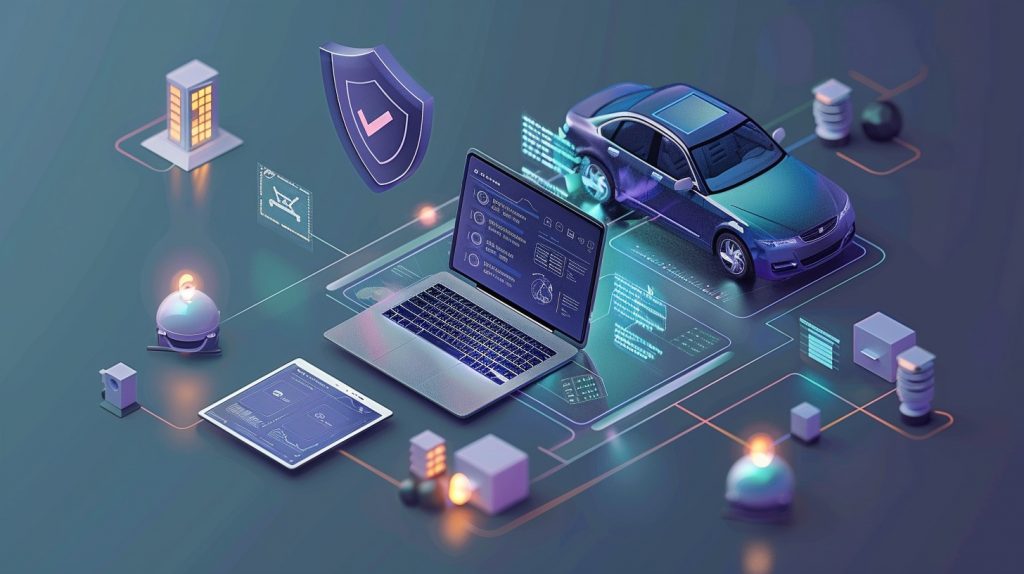The auto insurance industry is rapidly evolving, offering new opportunities for car owners. One of the key concepts in insurance is comprehensive insurance for cars. But what is comprehensive insurance for a car? This type of policy covers damage to your vehicle not only from accidents but also from other factors like natural disasters, theft, or vandalism.
However, alongside traditional insurance methods, artificial intelligence (AI) is having a massive impact on the industry. AI is already revolutionizing auto insurance, and by 2025, it is expected to completely transform this sector. Here’s how AI is changing auto insurance:
1. Personalized pricing and risk assessment
AI is redefining how insurers calculate premiums. Traditionally, insurers relied on broad factors like age, driving history, and location. Now, AI harnesses real-time data to offer personalized pricing based on individual driving behavior.
Telematics devices track metrics such as speed, braking habits, and mileage, enabling insurers to more accurately assess risk. Safe drivers are rewarded with lower premiums, while risky driving behaviors lead to higher rates. This shift ensures pricing better reflects actual driving habits.
2. Claims automation for faster processing
AI is revolutionizing the claims process, making it faster and more efficient. By 2025, many insurers could use AI-powered chatbots and virtual assistants to handle claims initiation. These systems can gather essential details, analyze damage through photo or video uploads, and even make initial decisions on claim eligibility — all within minutes.
3. Enhanced fraud detection
Fraudulent claims are a persistent challenge for the car insurance industry, often driving up premiums for honest policyholders. AI combats this issue by analyzing vast amounts of data to detect suspicious patterns or anomalies. This allows insurers to identify and address fraudulent claims more effectively, reducing costs for everyone.
4. Improved customer service with AI chatbots
Customer support is evolving, thanks to advanced AI chatbots. By 2025, many insurers will offer 24/7 customer assistance through AI-driven systems. These chatbots can answer policy-related questions, assist with coverage changes, and even provide instant quotes, enhancing the overall customer experience and increasing accessibility.

5. AI-driven driver safety and assistance
AI isn’t just helping insurers — it’s also making roads safer for drivers. By 2025, more vehicles will feature AI-powered safety systems like collision detection, lane-keeping assistance, and autonomous driving technologies. These innovations reduce accidents, which in turn can lead to lower insurance costs for drivers.
6. Predictive analytics for customer retention
AI is proving invaluable in retaining customers. By analyzing extensive customer data, AI can predict when a policyholder might consider switching providers. Insurers can use this insight to proactively offer tailored discounts, personalized benefits, or targeted communications to strengthen customer loyalty.
7. Promoting sustainability in car insurance
AI is also driving sustainability in the insurance industry. By 2025, insurers will likely assess the environmental impact of vehicles and offer incentives for eco-friendly options. With the rise of electric and hybrid vehicles, AI can evaluate a vehicle’s carbon footprint and reward policyholders with discounts or special coverage for choosing greener alternatives.
Conclusion
The integration of AI into the car insurance industry is not just a technological advancement — it’s a transformational leap. From improving risk assessment and enhancing customer experiences to promoting sustainability and reducing costs, AI is reshaping how insurers operate while delivering greater value to policyholders.
As technology continues to evolve, the potential for AI in car insurance will only grow, paving the way for a smarter, more efficient, and customer-centered future. Insurers that adopt and adapt to these advancements will undoubtedly gain a competitive edge in an increasingly dynamic market.




